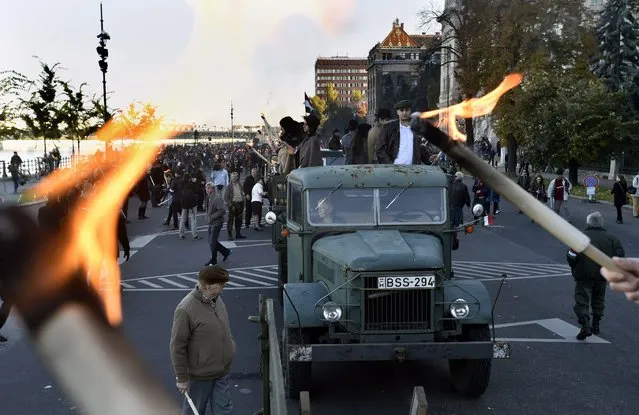
An old, historical truck is seen between torchlights as participants prepare for a march from the Budapest University of Technology and Economics through the streets of Budapest to re-enact the protest march of Hungarian students in 1956 which ignited the revolution and war of independence against communist rule and the Soviet Union, Saturday, October 22, 2016, the eve of the 60th anniversary of the outbreak of the 1956 revolution in Hungary. The Hungarian Revolution of 1956 or the Hungarian Uprising of 1956 was a nationwide revolt against the government of the Hungarian People's Republic and its Soviet-imposed policies, lasting from 23 October until 10 November 1956. Though leaderless when it first began, it was the first major threat to Soviet control since the USSR's forces drove out Nazi Germany from its territory at the end of World War II and broke into Central and Eastern Europe. The revolt began as a student demonstration, which attracted thousands as they marched through central Budapest to the Parliament building, calling out on the streets using a van with loudspeakers via Radio Free Europe. The revolt spread quickly across Hungary and the government collapsed. Thousands organised into militias, battling the ÁVH (State Security Police) and Soviet troops. Radical impromptu workers' councils wrested municipal control from the ruling Hungarian Working People's Party and demanded political changes. A new government formally disbanded the ÁVH, declared its intention to withdraw from the Warsaw Pact, and pledged to re-establish free elections. After announcing a willingness to negotiate a withdrawal of Soviet forces, the Politburo changed its mind and moved to crush the revolution. On 4 November, a large Soviet force invaded Budapest and other regions of the country. The Hungarian resistance continued until 10 November. Over 2,500 Hungarians and 700 Soviet troops were killed in the conflict, and 200,000 Hungarians fled as refugees. Mass arrests and denunciations continued for months thereafter. By January 1957, the new Soviet-installed government had suppressed all public opposition. These Soviet actions, while strengthening control over the Eastern Bloc, alienated many Western Marxists, leading to splits and/or considerable losses of membership for Communist Parties in the West. (Photo by Zoltan Mathe/MTI via AP Photo)
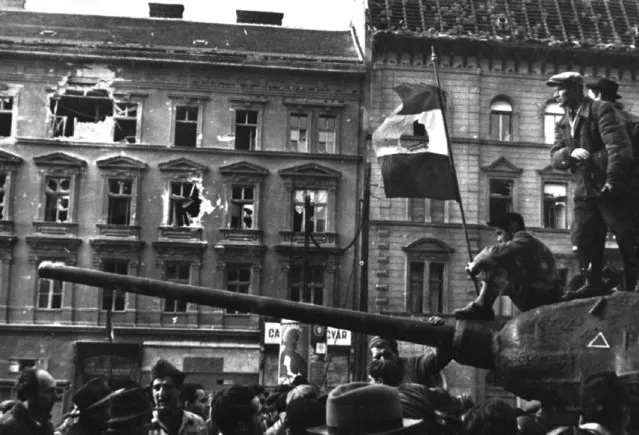
Fighters sit on top of a tank with a revolutionary flag in Budapest at the time of the uprising against the Soviet-supported Hungarian communist regime in 1956. The picture was taken in the period between October 23 and November 4, 1956. (Photo by Laszlo Almasi/Reuters)
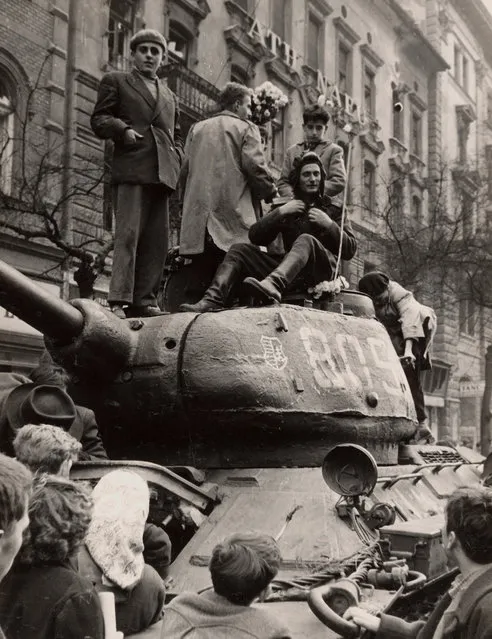
Fighters stand on top of a tank in Budapest at the time of the uprising against the Soviet-supported Hungarian communist regime in 1956. The picture was taken in the period between October 23 and November 4, 1956. (Photo by Laszlo Almasi/Reuters)
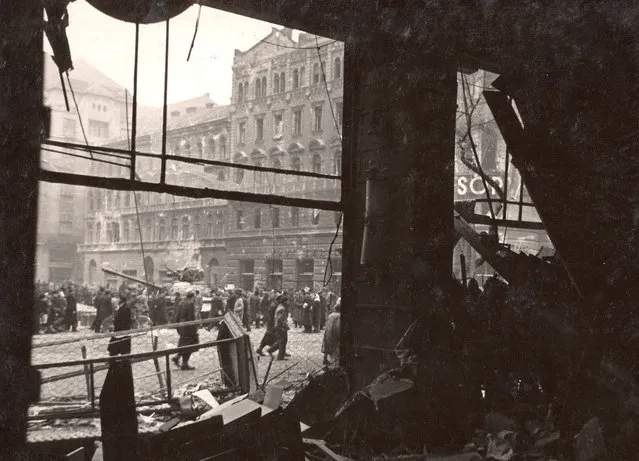
Hungarians walk on the streets of Budapest at the time of the uprising against the Soviet-supported Hungarian communist regime in 1956. The picture was taken in the period between October 23 and November 4, 1956. (Photo by Laszlo Almasi/Reuters)
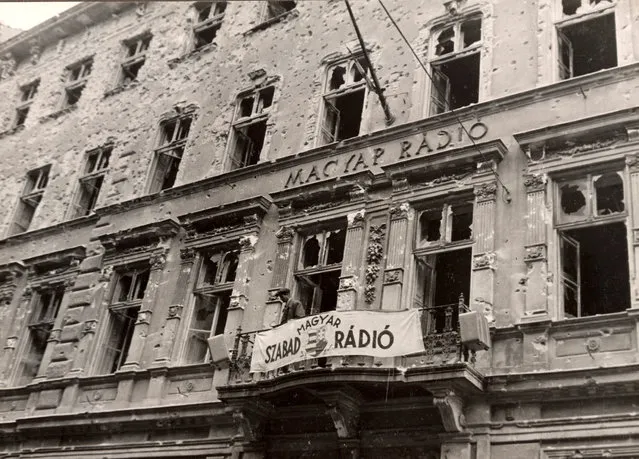
A general view shows the building of the national radio station covered in bullet holes in central Budapest at the time of the uprising against the Soviet-supported Hungarian communist regime in 1956. The picture was taken in the period between October 23 and November 4, 1956. (Photo by Laszlo Almasi/Reuters)
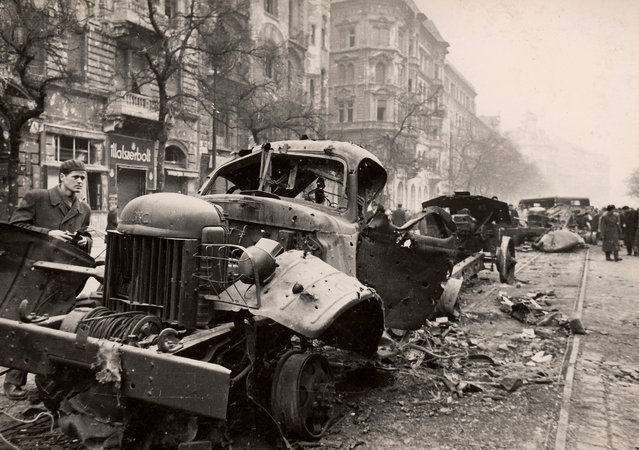
A general view shows the wreckage of armed trucks on the streets of Budapest at the time of the uprising against the Soviet-supported Hungarian communist regime in 1956. The picture was taken in the period between October 23 and November 4, 1956. (Photo by Laszlo Almasi/Reuters)
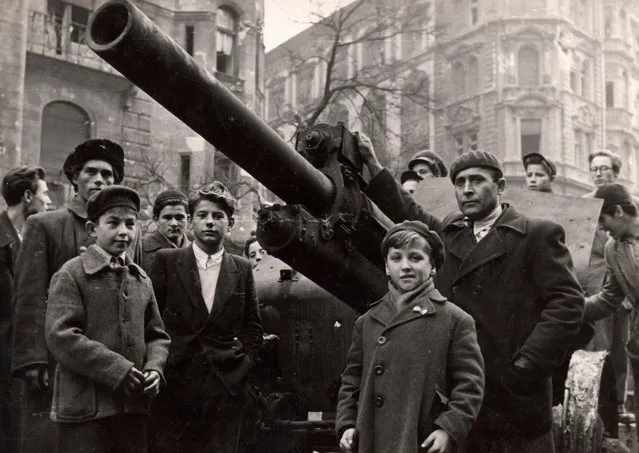
Fighters stand next to a Soviet tank on the streets of Budapest at the time of the uprising against the Soviet-supported Hungarian communist regime in 1956. The picture was taken in the period between October 23 and November 4, 1956. (Photo by Laszlo Almasi/Reuters)
23 Oct 2016 11:39:00,
post received
0 comments
